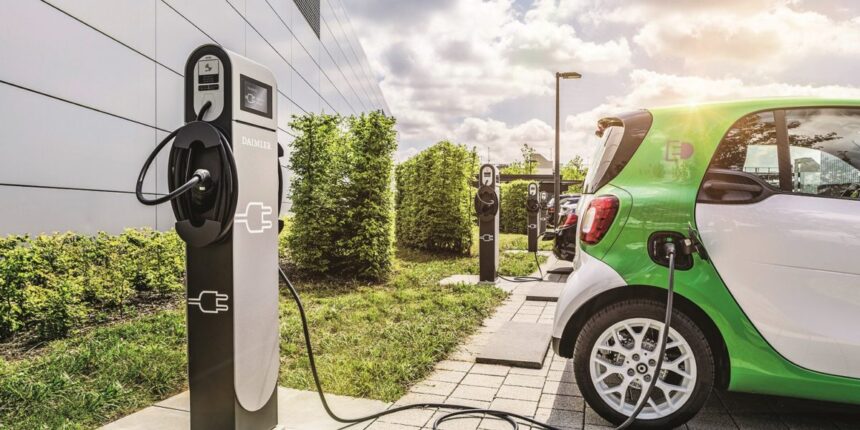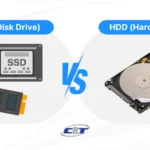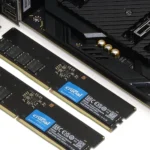With the growing demand for electric vehicles (EVs), more and more people are making the transition to sustainable driving. However, one of the most crucial components of owning an electric vehicle is choosing the right EV charger for your home. The type of charger you install in your home can directly influence the convenience, efficiency, and speed of charging your EV.
In this comprehensive guide, we will walk you through everything you need to know about EV chargers, from understanding the different types to evaluating the key considerations for choosing the right one for your home. Whether you are just starting your EV journey or looking to upgrade your existing charging setup, this guide will help you make an informed decision.
Understanding EV Chargers: A Basic Overview
When it comes to charging an electric vehicle, there are several options available. The type of charger you choose will significantly impact the charging time, cost, and convenience of your experience. To help you better understand your options, let’s start with a breakdown of the most common types of EV chargers: Level 1, Level 2, and DC fast chargers.
Level 1 EV Charger: The Standard Household Outlet
The Level 1 EV charger is the most basic form of charging and typically comes standard with all new electric vehicles. This type of charger uses a standard 120-volt household outlet, which is the same type of outlet used for most home appliances like lamps, televisions, and small kitchen devices.
While a Level 1 charger is the most convenient in terms of availability, it is also the slowest charging option. Typically, a Level 1 charger adds between 2 to 5 miles of range per hour of charging. For an average daily commute, you would likely need to leave your vehicle plugged in overnight to ensure a full charge. While Level 1 charging is fine for occasional use, it is not ideal for drivers who require faster charging or those who drive longer distances on a daily basis.
Level 2 EV Charger: The Most Popular Option for Home Charging
Level 2 chargers are the most widely used charging solution for home EV owners. These chargers operate on a 240-volt circuit, the same voltage as most home electric dryers or ovens. With this setup, a Level 2 charger provides significantly faster charging speeds compared to a Level 1 charger, adding anywhere from 10 to 60 miles of range per hour of charging, depending on the charger’s power and your EV’s charging capacity.
Level 2 chargers require a dedicated 240-volt outlet and installation by a professional electrician. The installation process can be more costly than a simple Level 1 plug-in, but for those who rely on their EVs for daily commuting or long-distance trips, the increased speed and convenience of Level 2 chargers often make it worthwhile. With a Level 2 charger, it is possible to fully charge most EVs in 4 to 8 hours, which means you can plug in your car overnight and be ready to go in the morning.
DC Fast Charger: Ultra-Fast Charging for Commercial Use
DC fast chargers, also known as direct current fast chargers (DCFC), are the fastest type of EV charger available. These chargers bypass the vehicle’s onboard AC-to-DC converter and directly supply DC electricity to the battery, allowing for much faster charging speeds compared to Level 1 and Level 2 chargers.
DC fast chargers can charge an EV to 80% in as little as 30 minutes, making them ideal for long road trips or commercial settings where quick turnaround times are essential. However, DC fast chargers are typically not suitable for residential use due to their high installation costs and specialized power requirements. These chargers are most commonly found at public charging stations along highways, and they require robust infrastructure and safety measures to handle the large amounts of power they deliver.
Key Considerations When Choosing an EV Charger
Selecting the right EV charger for your home is not just about picking the fastest option available. Several important factors must be considered, including the type of vehicle you own, the capacity of your home’s electrical system, your driving habits, and your budget for installation and maintenance. In the following sections, we will dive into the various considerations that should guide your decision-making process.
1. Charging Speed and Your Driving Needs
One of the most important factors to consider when selecting an EV charger is the speed at which it will charge your vehicle. Charging speed is typically measured in miles of range per hour of charging. If you rely on your EV for daily commutes or long trips, the speed at which your vehicle charges can significantly impact your convenience.
- Level 1 chargers provide a slower rate of charging, making them more suitable for low-mileage drivers who do not mind leaving their car plugged in overnight.
- Level 2 chargers are much faster and are ideal for people who need a full charge in a shorter amount of time. They are the most popular choice for homeowners who want to quickly charge their EVs overnight or during the day.
- DC fast chargers are the fastest but are generally not necessary for residential use unless you need rapid charging for long-distance trips and have the infrastructure to support them.
When choosing your charger, consider how much driving you typically do in a day. If you find yourself often running errands or traveling long distances, a Level 2 charger will be a much more efficient and practical choice.
2. Compatibility with Your Electric Vehicle
Not all EVs are created equal, and different models may have different charging needs. While most electric vehicles on the market today can be charged with both Level 1 and Level 2 chargers, it’s essential to confirm that the charger you’re considering is compatible with your specific vehicle.
Some EVs may require specific adapters or connectors to connect to certain types of chargers. Most electric vehicles use a standard J1772 connector for Level 1 and Level 2 charging, but certain manufacturers, such as Tesla, use their own proprietary connectors. In such cases, you may need to purchase an adapter to ensure compatibility with public chargers or install a Tesla-specific charging station at home.
Before purchasing a charger, review your vehicle’s charging requirements and confirm the type of connector it uses. This will ensure that you don’t encounter compatibility issues during installation.
3. Electrical Capacity and Infrastructure of Your Home
Another important consideration when selecting an EV charger is the electrical capacity of your home. Level 2 chargers require a 240-volt electrical circuit, which may not be readily available in some homes. If your home is not already equipped with a 240-volt outlet (commonly used for large appliances like electric dryers), you may need to have one installed.
In addition to ensuring the availability of a suitable outlet, you’ll need to assess whether your home’s electrical system can handle the added load of a Level 2 charger. This may require upgrading your electrical panel, which can be an additional cost.
It is crucial to hire a licensed electrician to evaluate your home’s electrical system and determine whether any upgrades are necessary before installing a Level 2 charger. An electrician will also ensure that the installation is safe and compliant with local building codes.
4. Cost of Installation and Maintenance
The cost of installing an EV charger will vary depending on the type of charger you choose, the complexity of the installation, and whether any electrical upgrades are necessary. Level 1 chargers typically don’t require any special installation, as they can be plugged into a standard household outlet.
For Level 2 chargers, installation costs can range from $500 to $2,000, depending on factors such as the need for electrical panel upgrades, the distance between the charging station and the power source, and local labor rates. While it may be tempting to opt for a less expensive installation option, it’s important to remember that improper installation can lead to safety hazards, so hiring a qualified electrician is crucial.
Ongoing maintenance costs for an EV charger are typically minimal. However, it’s a good idea to periodically inspect the charger for any wear and tear, as well as check for any software updates that may be available for smart chargers.
5. Location of Installation: Indoor vs. Outdoor Charging
The location where you choose to install your EV charger will play a significant role in your decision-making process. Most people opt for a garage installation, as it provides a secure and sheltered environment for both the charger and the vehicle.
However, if you don’t have a garage, you may need to install your charger outside. Outdoor chargers must be weatherproof and designed to withstand the elements. If you’re installing an outdoor charger, ensure that the charger is rated for outdoor use and properly protected from rain, snow, and extreme temperatures.
The location of your charger should also be easily accessible to your vehicle’s charging port. If you have a long driveway, you may need to consider the distance between your vehicle’s parking spot and the location of the charging outlet.
How to Install Your EV Charger
Now that you’ve selected the right charger for your home, it’s time to install it. Below is a step-by-step guide to the installation process.
1. Hire a Qualified Electrician
Installing a Level 2 charger requires expertise, so it’s important to hire a licensed electrician who has experience with EV charger installations. A qualified electrician will ensure that the charger is installed safely and according to code.
2. Conduct a Home Electrical Assessment
Before installation begins, the electrician will assess your home’s electrical capacity and determine if any upgrades are necessary. If your electrical panel cannot support the additional load of a Level 2 charger, you may need to have it upgraded.
3. Install the Charger
Once the necessary electrical work is completed, the electrician will install the charger. This involves mounting the charging station on the wall, connecting it to the electrical circuit, and testing the system to ensure everything is working correctly.
4. Test the Charging System
Before using your EV charger, test it to make sure it’s operating properly. Verify that the charger connects to your EV’s battery and that it provides the expected charging speed. If you experience any issues, contact your electrician for assistance.
Ongoing Maintenance and Troubleshooting
While EV chargers require minimal maintenance, there are a few steps you can take to ensure their longevity and efficiency.
1. Inspect the Charger Regularly
Inspect your charger every few months for signs of wear, such as damaged cables, exposed wires, or any malfunctioning parts.
2. Clean the Charger
Dust, dirt, and debris can accumulate on your charger over time, especially if it is installed outdoors. Clean the charger periodically with a damp cloth to remove dirt and keep it functioning smoothly.
3. Troubleshoot Common Issues
If your charger isn’t working as expected, refer to the user manual for troubleshooting tips. Most common issues, such as charging interruptions or error messages, can be resolved by following the manufacturer’s instructions.
Conclusion: The Right EV Charger for Your Home
Choosing the right EV charger for your home involves more than just picking the fastest charger available. You need to consider factors like charging speed, compatibility with your vehicle, your home’s electrical capacity, and the cost of installation and maintenance. By evaluating these factors, you can ensure that you select the perfect charger for your needs.
With the right EV charger in place, you’ll enjoy the convenience of charging your vehicle at home, reducing your reliance on public charging stations, and contributing to a cleaner, more sustainable future.









